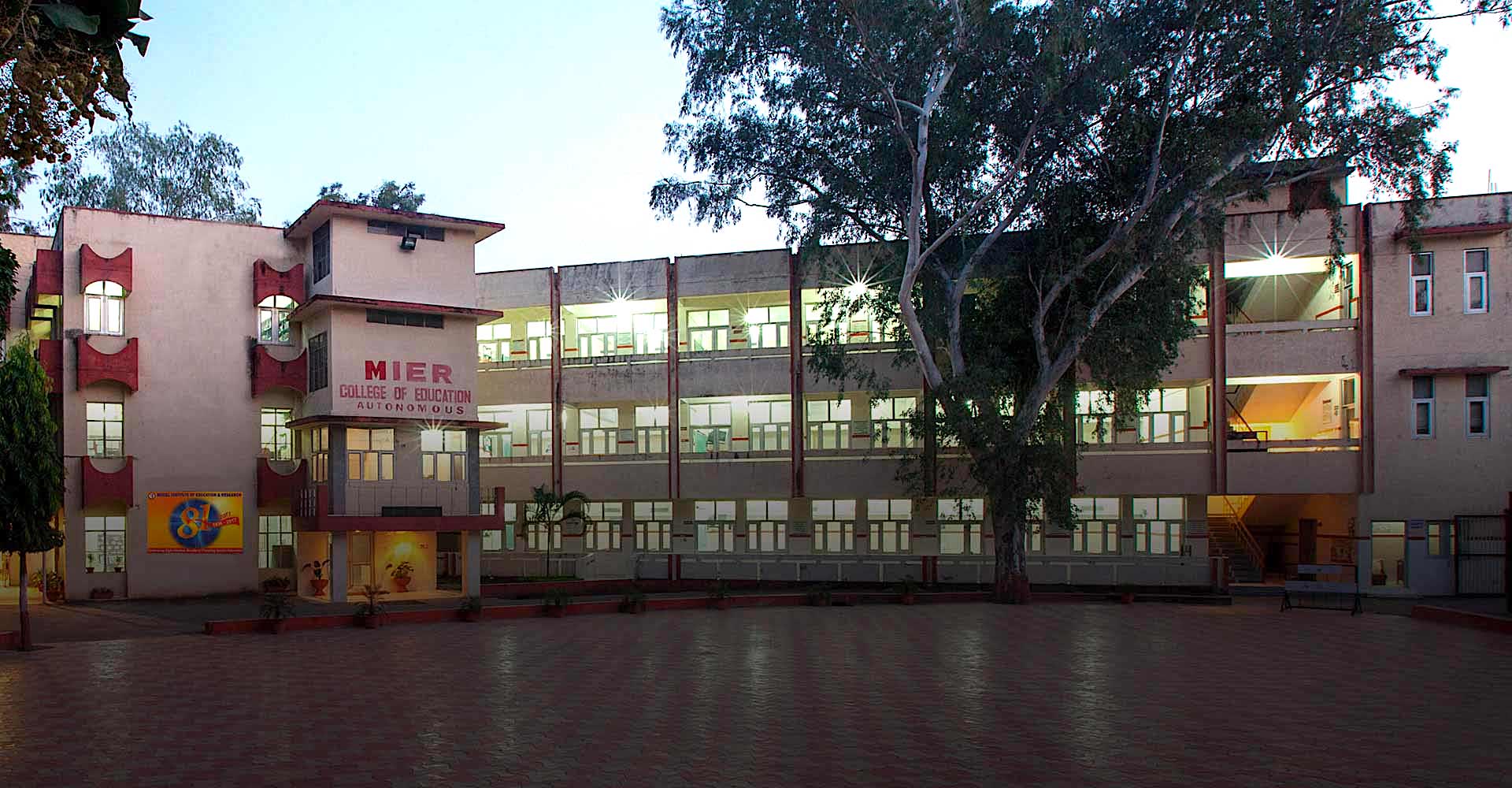Technological Tools in Education: Actionbound Experience of Prospective Biology Teachers
DOI:
https://doi.org/10.52634/mier/2024/v14/i1/2646Keywords:
Actionbound, Mobile Learning, Plant Blindness, Prospective TeachersAbstract
This study aims to analyse the experiences and perspectives of prospective biology teachers regarding their excursions using Actionbound to learn about plant species. The participants in the study consist of 30 undergraduate prospective biology teachers. The focus is on the prospective teachers’ enjoyment of the Actionbound experience, the duration to complete the excursion, their willingness to engage in another task-based game, and their views on implementing mobile device-supported biology teaching, specifically related to the design of a biology lesson using Actionbound. The prospective biology teachers predominantly found their experience with Actionbound enjoyable. Their perspectives centred on the App’s usability in education and its technical usability. Results show that biology lesson designed with mobile devices positively impacts knowledge retention, motivation, interest, and enjoyment. The results underscore the importance of designing learning environments for effective biology education and teacher training.
Downloads
Metrics
Downloads
Published
How to Cite
Issue
Section
License

This work is licensed under a Creative Commons Attribution 4.0 International License.
The articles published in the MIER Journal of Educational Studies, Trends and Practics (MJESTP) are distributed under the terms of the Creative Commons Attribution License (CC BY 4.0), which permits unrestricted use, distribution, and reproduction in any medium, provided the original author and source are credited.
- Copyright on any open access article in the MIER Journal of Educational Studies, Trends and Practics (MJESTP) published by Model Institute of Education and Research (MIER) is retained by the author(s).
- Author(s) grant MIER a license to publish the article and identify himself/herself/themselves as the original publisher.
- Authors also grant any third party the right to use the article freely as long as its integrity is maintained and its original authors, citation details and publisher are identified.
- The Creative Commons Attribution License 4.0 formalizes these and other terms and conditions of publishing articles.
References
Akpinar, E. (2006). Computer support in structuring abstract concepts in science teaching: The electricity unit that directs our lives. Unpublished doctoral thesis, Dokuz Eylul University, Izmir.
Altunisik, R., Coskun, R., Bayraktaroglu, S., & Yildirim, E. (2005). Research methods in social sciences, 4th edition. Turkiye: Sakarya.
Balas, B., & Momsen, J. L. (2014). Attention “blinks” differently for plants and animals. CBE: Life Sciences Education, 13(3), 437-443. https://doi.org/10.1187/cbe.14-05-0080 DOI: https://doi.org/10.1187/cbe.14-05-0080
Borsos, E., Bori, E., & Patocskai, M. (2023). What can be done to increase future teachers’ plant knowledge. Journal of Biological Education, 57(2), 252-262. https://doi.org/10.1080/00219266.2021.1909632 DOI: https://doi.org/10.1080/00219266.2021.1909632
Clary, R. M., & Wandersee, J. H. (2011). A “Coprolitic Vision” for earth science education. School Science and Mathematics, 111(6), 262-273. https://doi.org/10.1111/j.1949-8594.2011.00087 DOI: https://doi.org/10.1111/j.1949-8594.2011.00087.x
Delil, S. (2017). Use of mobile devices as educational materials: Contribution of properly designed mobile education applications to learning. International Journal of Social Sciences and Education Research, 3(1), 200-207. DOI: https://doi.org/10.24289/ijsser.270650
Dillon, J., Rickinson, M., Teamey, K., Morris, M., Choi, M. Y., Sanders, D., & Benefield, P. (2006). The value of outdoor learning: Evidence from research in the UK and elsewhere. School Science Review, 87(320), 193-200.
Drissner, J., Haase, H. M., & Hille, K. (2010). Short-term environmental education - Does it work? - An evaluation of the ‘Green Classroom. Journal of Biological Education, 44(4), 149-155. https://doi.org/10.1080/00219266.2010.9656215 DOI: https://doi.org/10.1080/00219266.2010.9656215
Fancovicova, J., & Prokop, P. (2010). Development and initial psychometric assessment of the plant attitude questionnaire. Journal of Science Education and Technology, 19(5), 415-421. https://doi.org/10.1007/s10956-010-9207-x DOI: https://doi.org/10.1007/s10956-010-9207-x
Flannery, M. C. (1991). Considering plants. The American Biology Teacher, 53(5), 306-309. Retrieved from https://www.jstor.org/stable/pdf/4449303.pdf DOI: https://doi.org/10.2307/4449303
Frisch, J. K., Unwin, M. M., & Saunders, G. W. (2010). Name that plant! overcoming plant blindness and developing a sense of place using science and environmental education. Netherlands: Springer. DOI: https://doi.org/10.1007/978-90-481-9222-9_10
Georgiev, T., Georgieva, E., & Smrikarov, A. (2013). M-learning-a new stage of e-learning. In International conference on computer systems and technologies-compsystech (Vol. 4, p. 1-4).
Greenfield, S. S. (1955). The challenge to botanists. Retrieved from https://secure.botany.org/plantsciencebulletin/psb-1955-01-1.php
Hershey, D. R. (1993). Plant neglect in biology education. BioScience, 43(7), 418. https://doi.org/10.2307/1311898. DOI: https://doi.org/10.2307/1311898
Hershey, D. R. (1996). A historical perspective on problems in botany teaching. The American Biology Teacher, 58(6), 340-347. https://doi.org/10.2307/4450174 DOI: https://doi.org/10.2307/4450174
Ireland, G. V., & Woollerton, M. (2010). The impact of the iPad and iPhone on education. Journal of Bunkyo Gakuin University Department of Foreign Languages and Bunkyo Gakuin College, 10, 31-48. Retrieved from https://www.bgu.ac.jp/assets/old/center/library/image/fsell2010_031-048.pdf
Kissi, L., & Dreesmann, D. (2018). Plant visibility through mobile learning? Implementation and evaluation of an interactive Flower Hunt in a botanic garden. Journal of Biological Education, 52(4), 344-363. https://doi.org/10.1080/00219266.2017.1385506 DOI: https://doi.org/10.1080/00219266.2017.1385506
Kristi, B., Parsley, K. M., & Sabel, J. L. (2021). An Analysis of Plant Awareness Disparity within Introductory Biology Textbook Images. Journal of Biological Education. https://doi.org/10.1080/00219266.2021.1920301 DOI: https://doi.org/10.1080/00219266.2021.1920301
Kucukali, R., & Coskun, H. C. (2021). Digitalisation in Education and the Place of Artificial Intelligence in School Management. International Journal of Leadership Studies: Theory and Practice, 4(2), 124-135. Retrieved from https://dergipark.org.tr/en/download/article-file/1483237
Lindemann-Matthies, P. (2005). ‘Loveable’ mammals and ‘lifeless’ plants: How children’s interest in common local organisms can be enhanced through observation of nature. International Journal of Science Education, 27(6),655-677. https://doi.org/10.1080/09500690500038116 DOI: https://doi.org/10.1080/09500690500038116
Menzi, N., Nezih, O., & Caliskan, E. (2012). Examining academicians’ opinions on the use of mobile technologies for educational purposes within the framework of the technology acceptance model. Journal of Aegean Education, 13(1), 39-55.
Miles, M. B., & Huberman, A. M. (1994). Qualitative data analysis: An expanded sourcebook. Sage.
Neuman, W. L. (2012). Social research methods: Quantitative and qualitative approaches. i-ii. volume (5th edition) (and others, Ed.). Istanbul: Publishing Room.
Ozdemir, M. (2010). Qualitative data analysis: A study on the problematic of methodology in social sciences. Eskisehir Osmangazi University Journal of Social Sciences, 11(1), 323-343. Retrieved from https://dergipark.org.tr/en/download/article-file/113287
Pany, P., & Heidinger, C. (2017). Useful plants as potential flagship species to counteract plant blindness. In and others (Ed.), Cognitive and affective aspects in science education research: Selected papers from the esera 2015 conference (p. 127-140). Springer International Publishing. DOI: https://doi.org/10.1007/978-3-319-58685-4_10
Patten, B., Sanchez, I. A., & Tangney, B. (2006). Designing collaborative, constructionist and contextual applications for handheld devices. Computers and Education, 46(3), 294308. https://doi.org/10.1016/j.compedu.2005.11.011 DOI: https://doi.org/10.1016/j.compedu.2005.11.011
Patton, M. Q. (1987). How to use qualitative methods in evaluation (no. 4). Sage.
Randler, C. (2008). Teaching species identification- A prerequisite for learning biodiversity and understanding ecology. Eurasia Journal of Mathematics, 4(3), 223-231. DOI: https://doi.org/10.12973/ejmste/75344
Schussler, E. E., & Olzak, L. A. (2008). It’s not easy being green: student recall of plant and animal images. Journal of Biological Education, 42(3), 112-119. https://doi.org/10.1080/00219266.2008.9656123 DOI: https://doi.org/10.1080/00219266.2008.9656123
Sharples, M., Corlett, D., & Westmancott, O. (2002). The design and implementation of a mobile learning resource. Personal and Ubiquitous Computing, 6, 220-234. https://doi.org/10.1007/s007790200021 DOI: https://doi.org/10.1007/s007790200021
Sjoberg, S., & Schreiner, C. (2010). The ROSE project. An overview and key findings. Retrieved from https://www.uv.uio.no/ils/english/research/projects/rose/publications/the-rose-project.pdf
Sung, E., & Mayer, R. E. (2013). Online multimedia learning with mobile devices and desktop computers: An experimental test of Clark’s methods-not-media hypothesis. Computers in Human Behavior, 29(3), 639-647. DOI: https://doi.org/10.1016/j.chb.2012.10.022
Tekkaya, C., Capa, Y., & Yilmaz, O. (2000). Misconceptions of prospective biology teachers about general biology subjects. Hacettepe University Journal of Education, 18, 140-147. Retrieved from https://hdl.handle.net/11511/88274
Tilic, G. (2020). The concept of gamification within the scope of digitalization in education. Journal of Art and Design, 26, 671-695. Retrieved from https://dergipark.org.tr/en/download/article-file/1473633
Tunnicliffe, S. D., & Ueckert, C. (2007). Teaching biology-the great dilemma. Journal of Biological Education, 41(2), 51-52. https://doi.org/10.1080/00219266.2007.9656061 DOI: https://doi.org/10.1080/00219266.2007.9656061
Vaughan, C., Gack, J., Solorazano, H., & Ray, R. (2003). The effect of environmental education on school children, their parents, and community members: A study of intergenerational and intercommunity learning. The Journal of Environmental Education, 34(3),12-21. https://doi.org/10.1080/00958960309603489 DOI: https://doi.org/10.1080/00958960309603489
Wandersee, J. H. (1986). Plants or animals: Which do junior high school students prefer to study? Journal of Research in Science Teaching, 23, 415-426. https://doi.org/10.1002/tea.3660230504 DOI: https://doi.org/10.1002/tea.3660230504
Wandersee, J. H., & Schussler, E. E. (1999). Preventing plant blindness. The American Biology Teacher, 61(2), 82-86. https://doi.org/10.2307/4450624 DOI: https://doi.org/10.2307/4450624
Wandersee, J. H., & Schussler, E. E. (2001). Towards a theory of plant blindness. Plant Science Bulletin, 27(1), 2-9. Retrieved from https://www.botany.org/bsa/psb/2001/psb47-1.html
Yildirim, A., & Simsek, H. (2018). Qualitative research methods in social sciences (11th edition (and others, Ed.). Retrieved from https://hdl.handle.net/11511/70532
Zani, G., & Low, J. (2022). Botanical priming helps overcome plant blindness on a memory task. Journal of Environmental Psychology, 81. DOI: https://doi.org/10.1016/j.jenvp.2022.101808
Zurita, G., & Nussbaum, M. (2004). Computer supported collaborative learning using wirelessly interconnected handheld computers. Computers & Education, 42(3), 289-314. https://doi.org/10.1016/j.compedu.2003.08.005 DOI: https://doi.org/10.1016/j.compedu.2003.08.005





















